Love token, Woodcock
John Woodcock, 1813
In 1813, seventeen year old John Woodcock was lag'd - meaning convicted, in the convict ‘flash’ slang language, for larceny and sentenced to seven years transportation. The simple lettering on this love token with his name on it suggests that Woodcock may have engraved it himself, while he awaited his transportation.
Woodcock appears to have spent two years on the Retribution hulk at Woolwich on the River Thames, where he probably worked in gangs on the docks, before he sailed for New South Wales on the Fanny, in August 1815. We don’t know who received John Woodcock’s love token - perhaps his mother or sister, or a young girlfriend. Maybe he handed it to her on the docks as he said his final farewells before the ship sailed.
After a voyage of 146 days, he arrived in January 1816, and as a sawyer and labourer, was sent away to work at Liverpool or Windsor. After serving his 7 year sentence, Woodcock received a Certificate of Freedom in 1821 and was free to return home to his loved ones. But a year later he was charged with theft and sentenced to another seven years and transferred to Port Macquarie. By 1829 he had served his sentence again, and Woodcock was transferred from the Phoenix hulk to Hyde Park Barracks. Three days later he was granted a Certificate of Freedom, which may have been presented to him at Hyde Park Barracks. Woodcock never returned home, and died from accidental burns in Berrima in 1849.
More artefacts
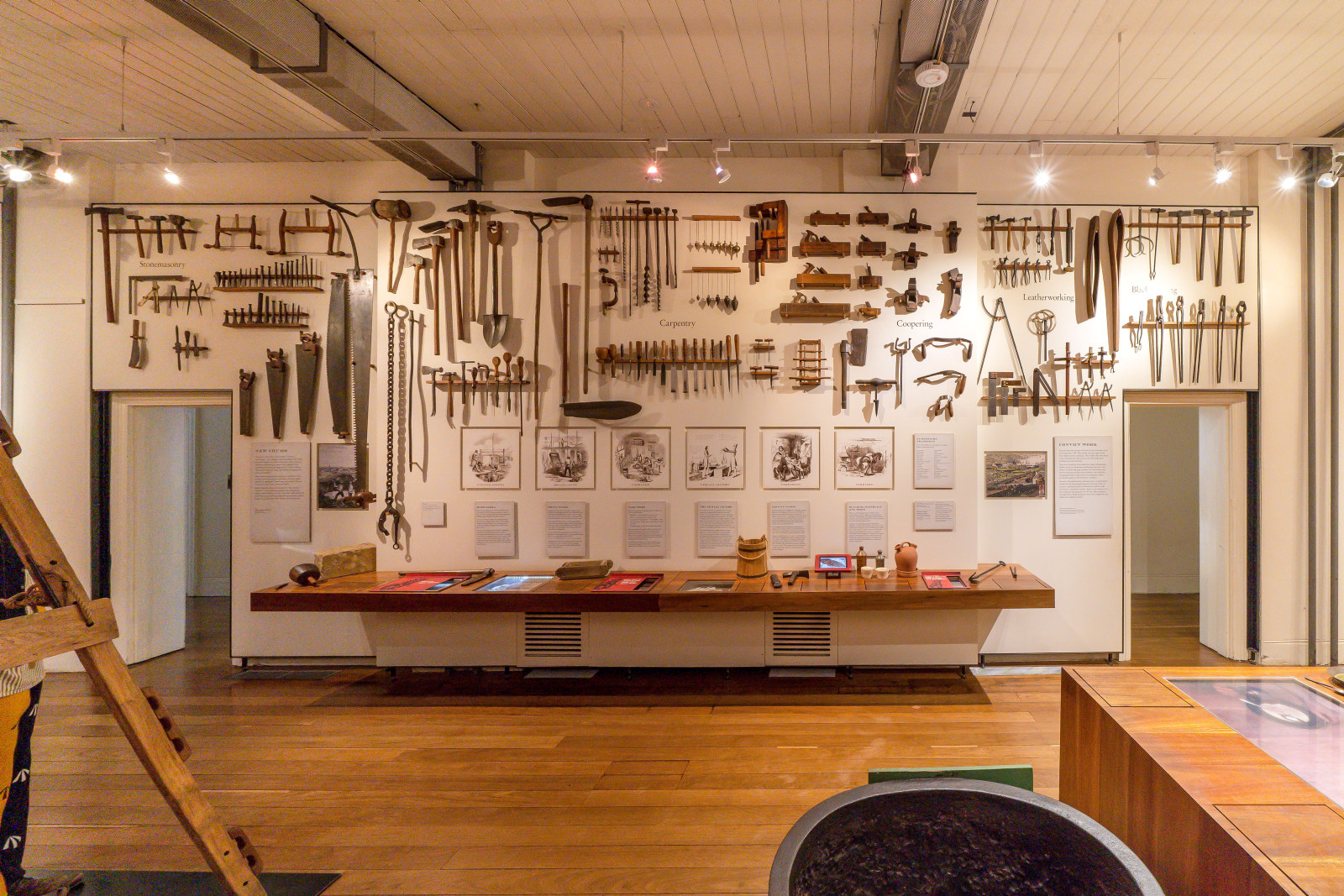
Convict Sydney
Objects
These convict-era objects and archaeological artefacts found at the Hyde Park Barracks and The Mint (Rum Hospital) are among the rarest and most personal artefacts to have survived from Australia’s early convict period
Related
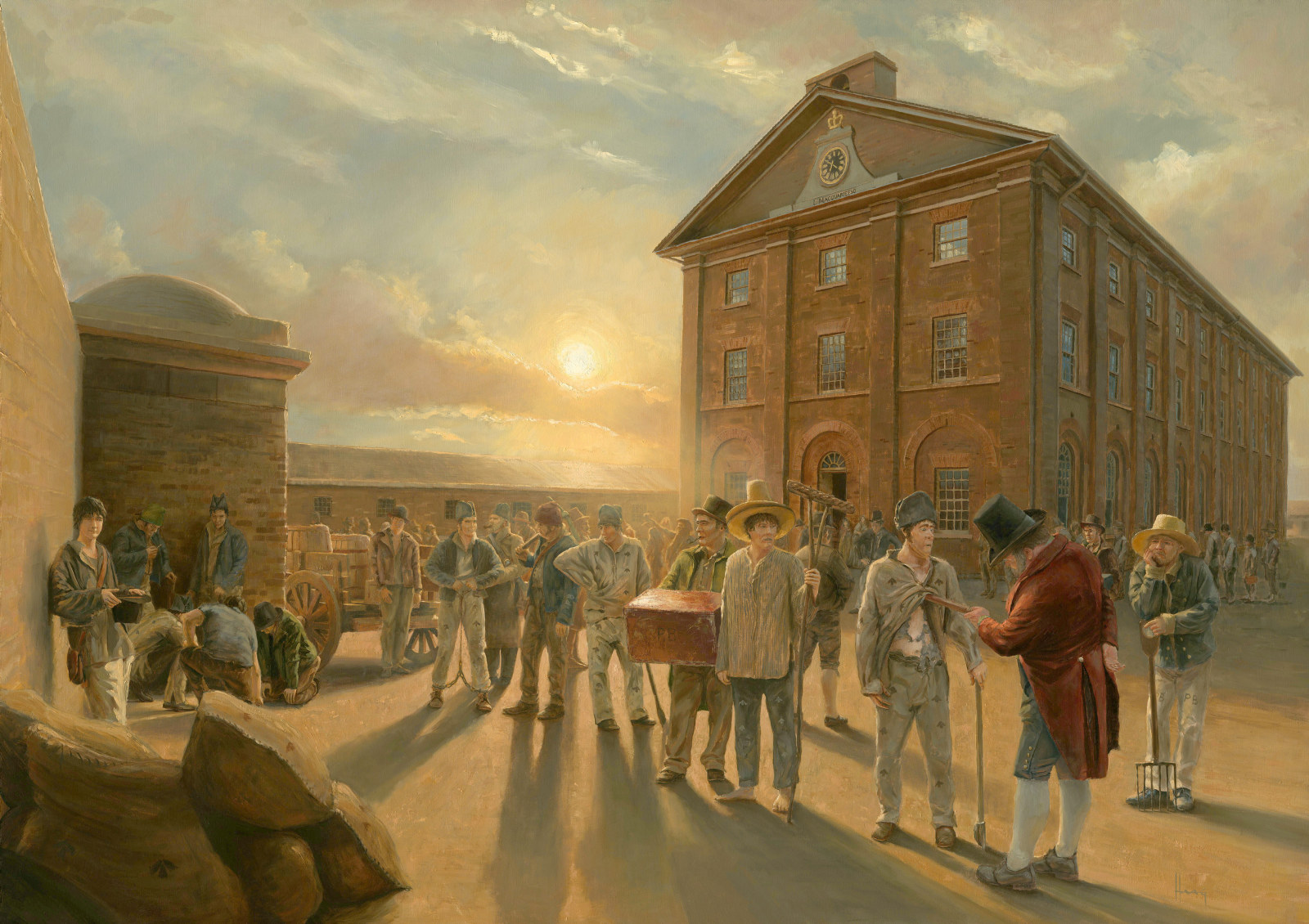
Convict Sydney
Convict Sydney
From a struggling convict encampment to a thriving Pacific seaport, a city takes shape
Published on
Convict clothing
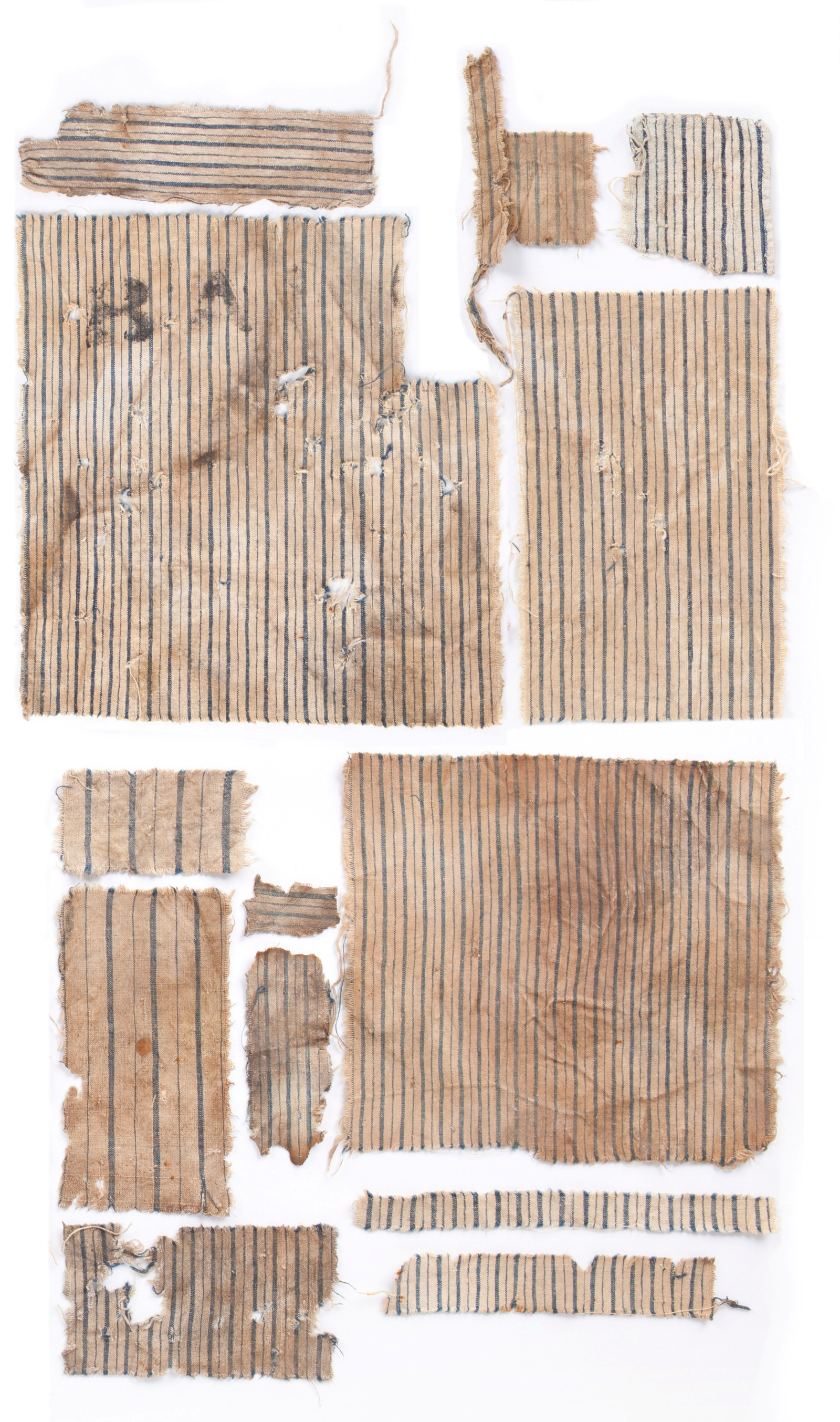
Convict Sydney
Convict shirt scraps
Deliberately torn into squares and strips, these scraps of convict shirt suggest that some convicts were recycling old clothing for new purposes
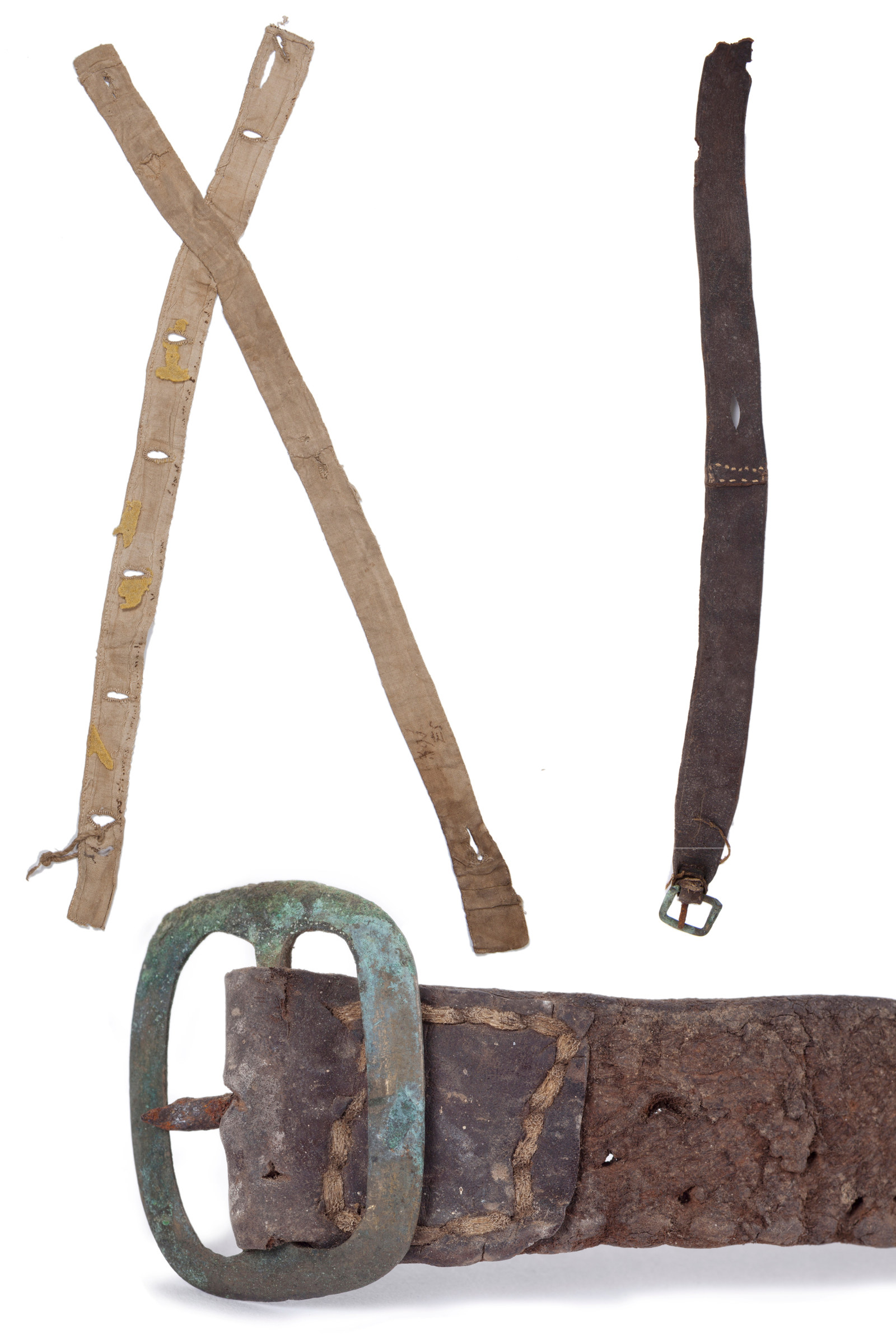
Convict Sydney
Convict braces and belts
Convict ‘slop’ clothing was one-size-fits-all, so some convicts had to improvise ways to keep up their baggy trousers
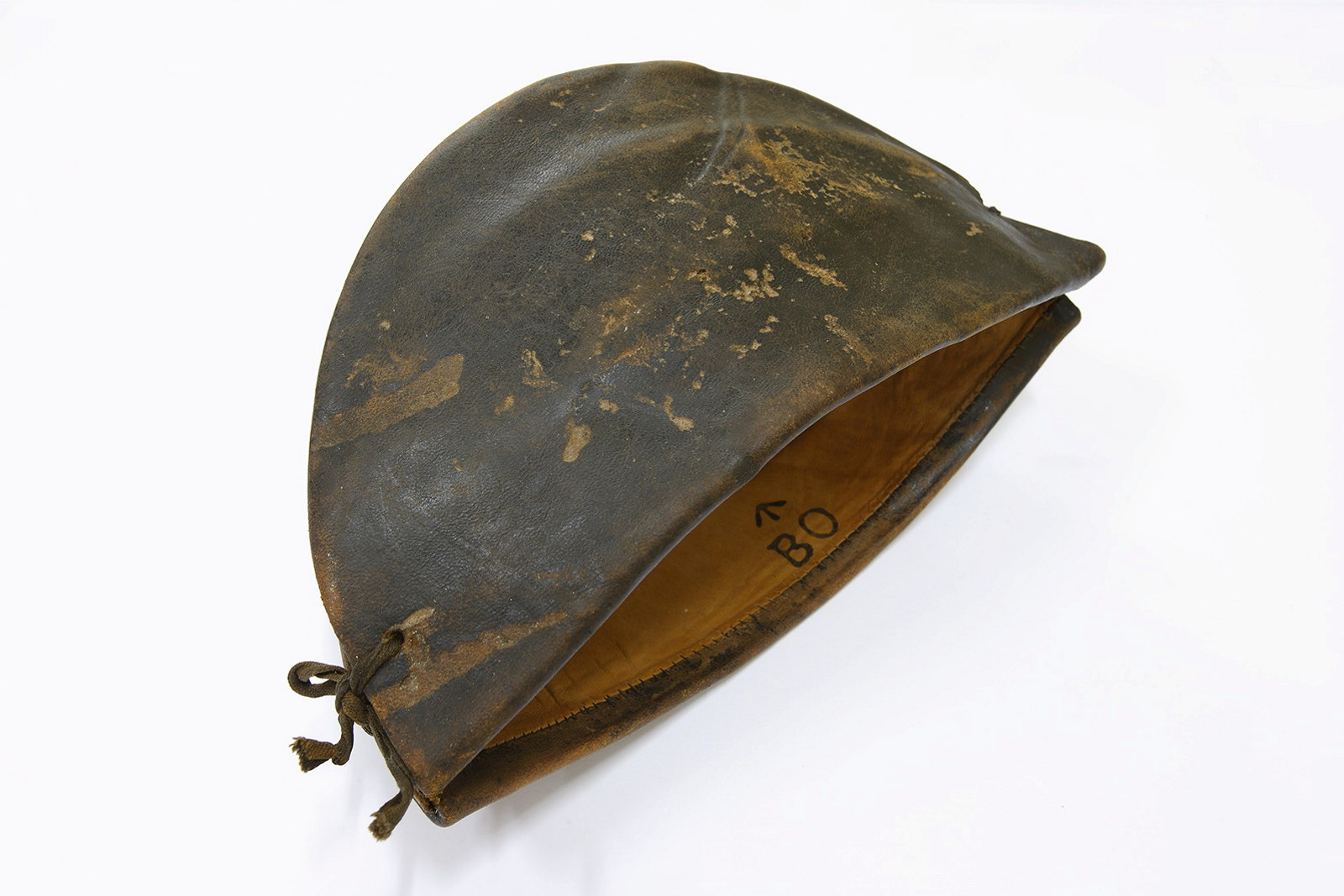
Convict Sydney
Convict cap
A hat was known as a castor or a kelp in the convict ‘flash’ slang language
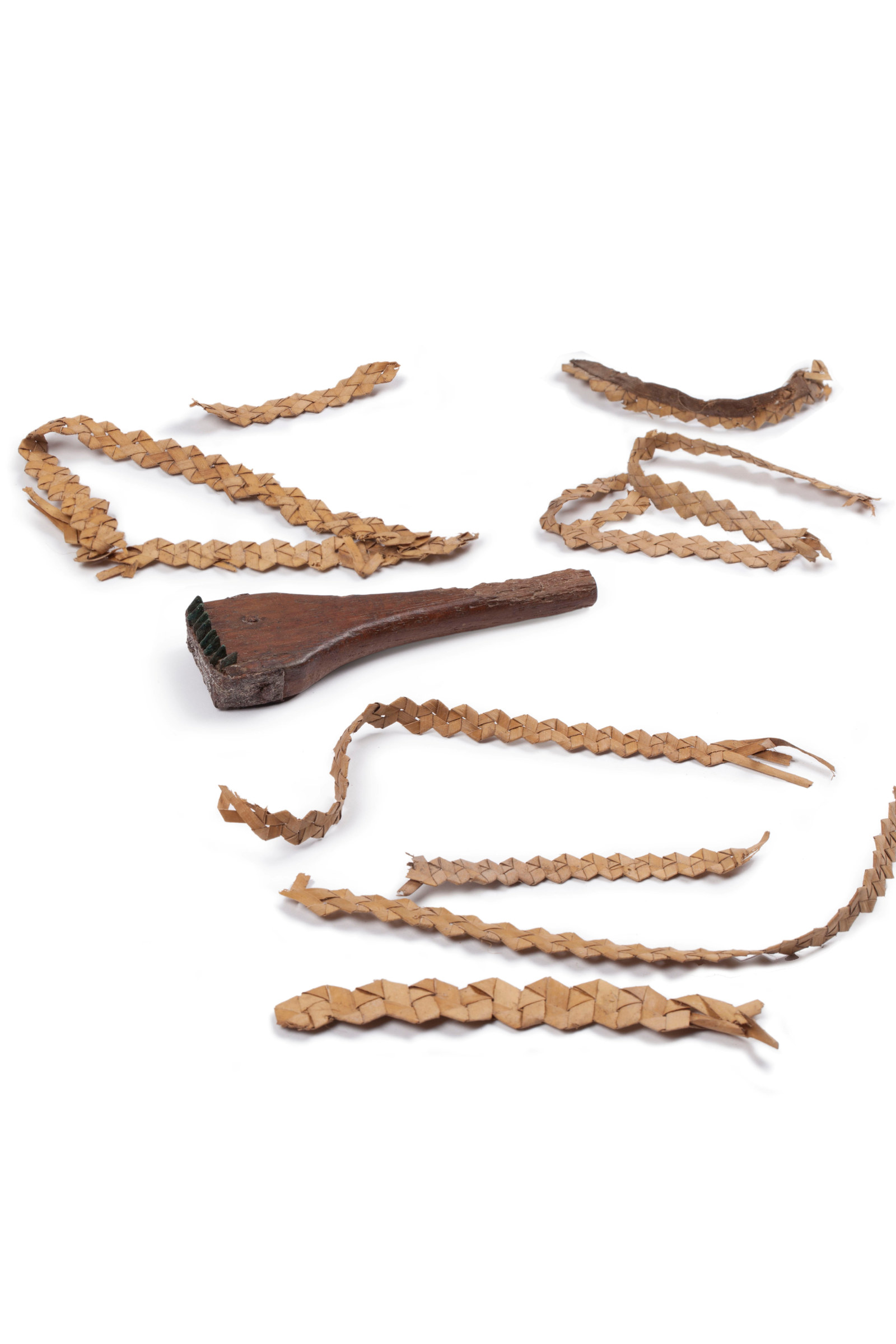
Convict Sydney
Convict hat sennets and leaf shredder
This shredding tool and ‘sennets’ or fragments of plaited cabbage tree palm leaves (Livistona australis) found beneath the floors of the Hyde Park Barracks were used by convicts for making hats
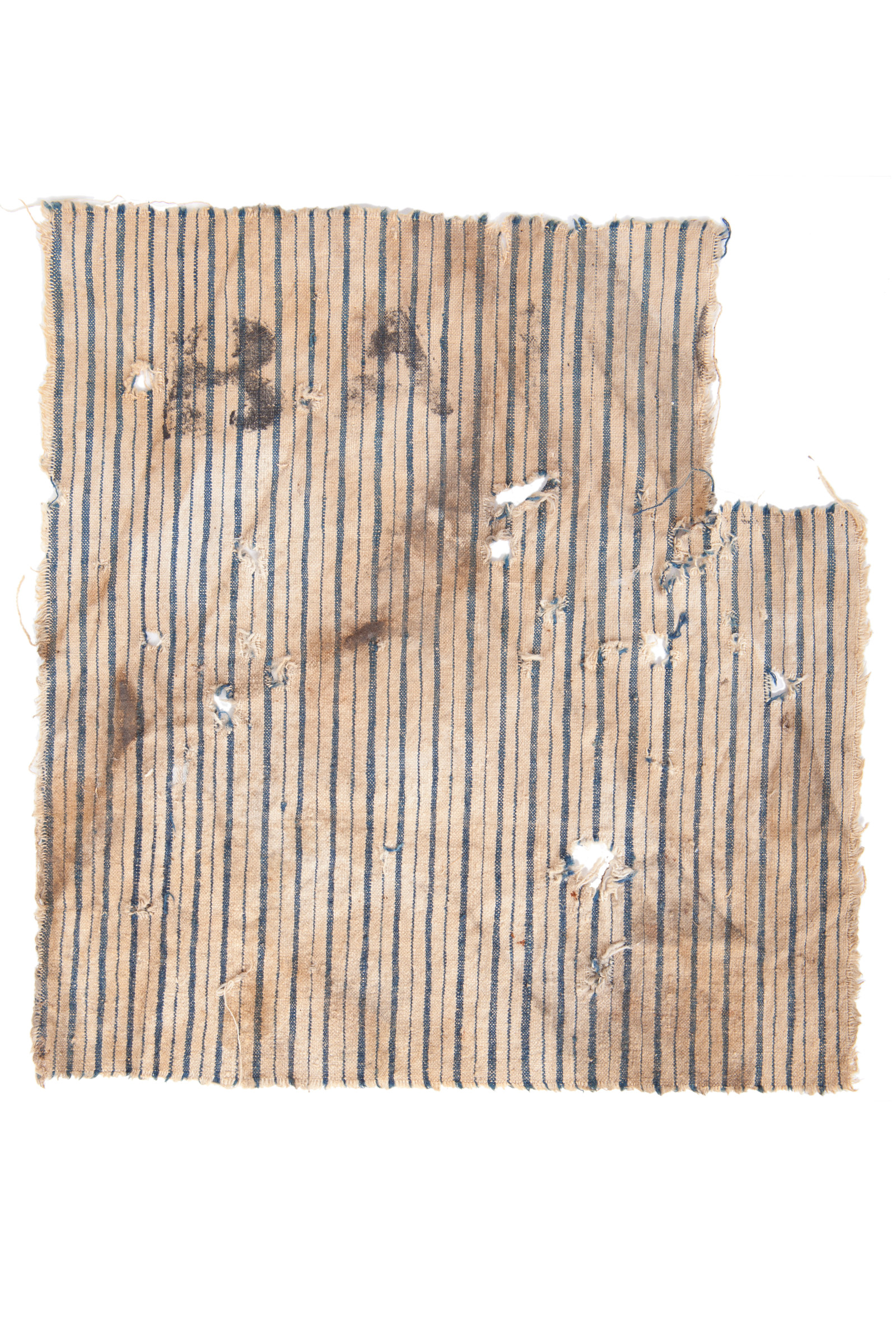
Convict Sydney
Convict shirt scrap, ‘B.A.’
This square scrap of striped convict shirt is curiously stamped with the letters ‘B’ and ‘A’
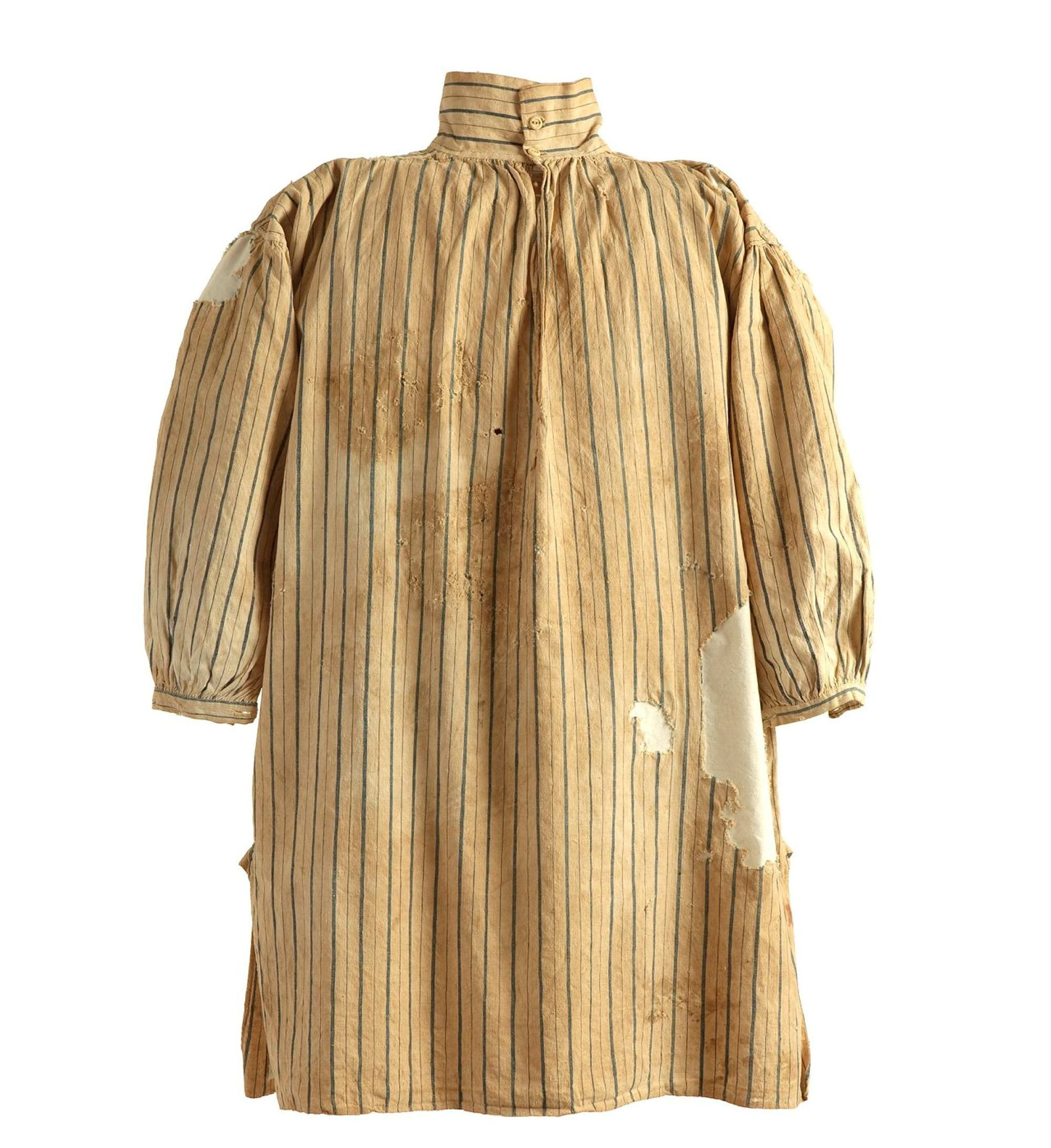
Convict Sydney
Convict shirt
Known as a smish, kemesa or flesh-bag in the convict ‘flash’ slang language, this convict uniform shirt has been worn, torn, stained and patched
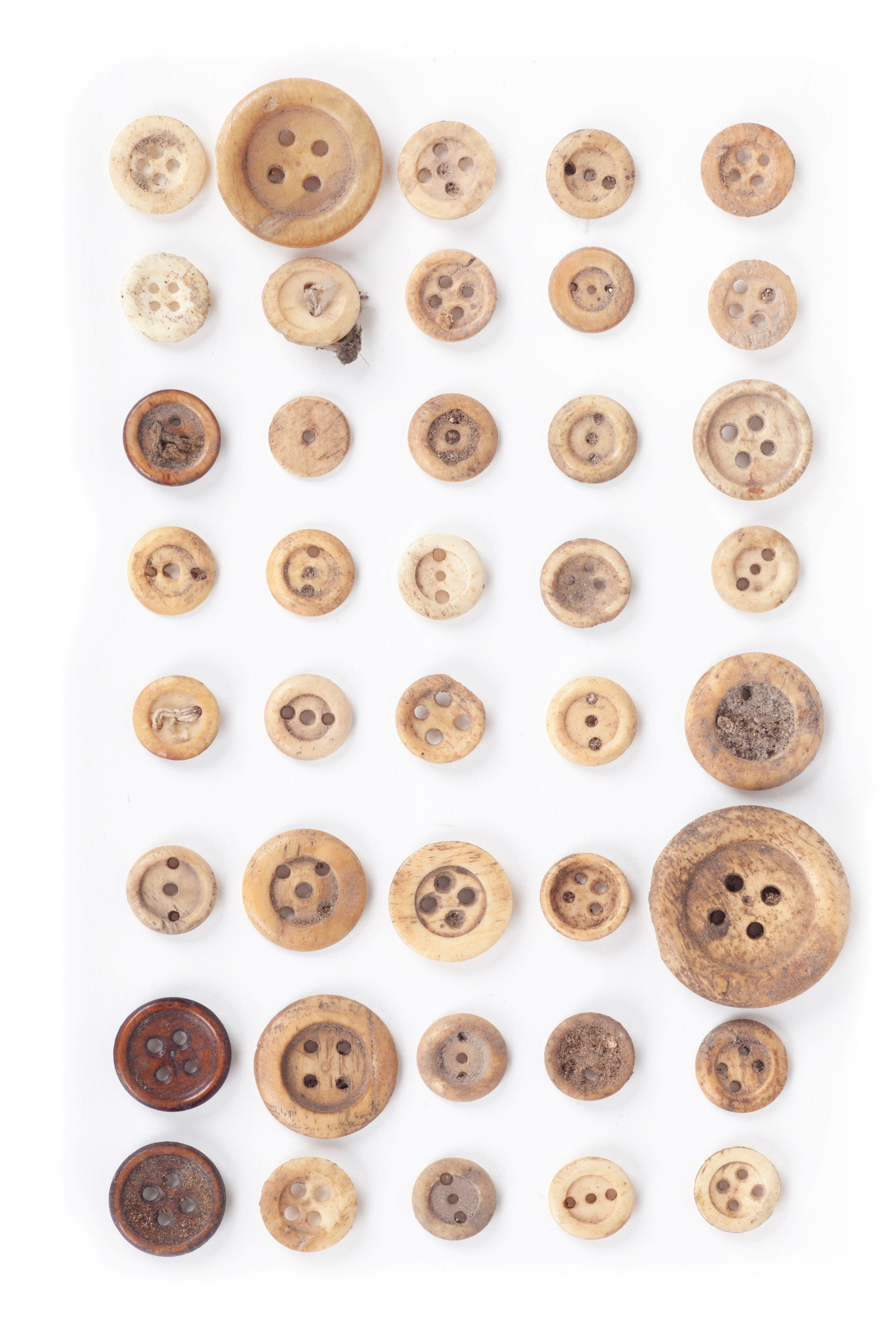
Convict Sydney
Convict uniform buttons
Archaeologists found more than 250 bone buttons, which were once attached to convict shirts, jackets and trousers and then lost beneath the floors at the Hyde Park Barracks
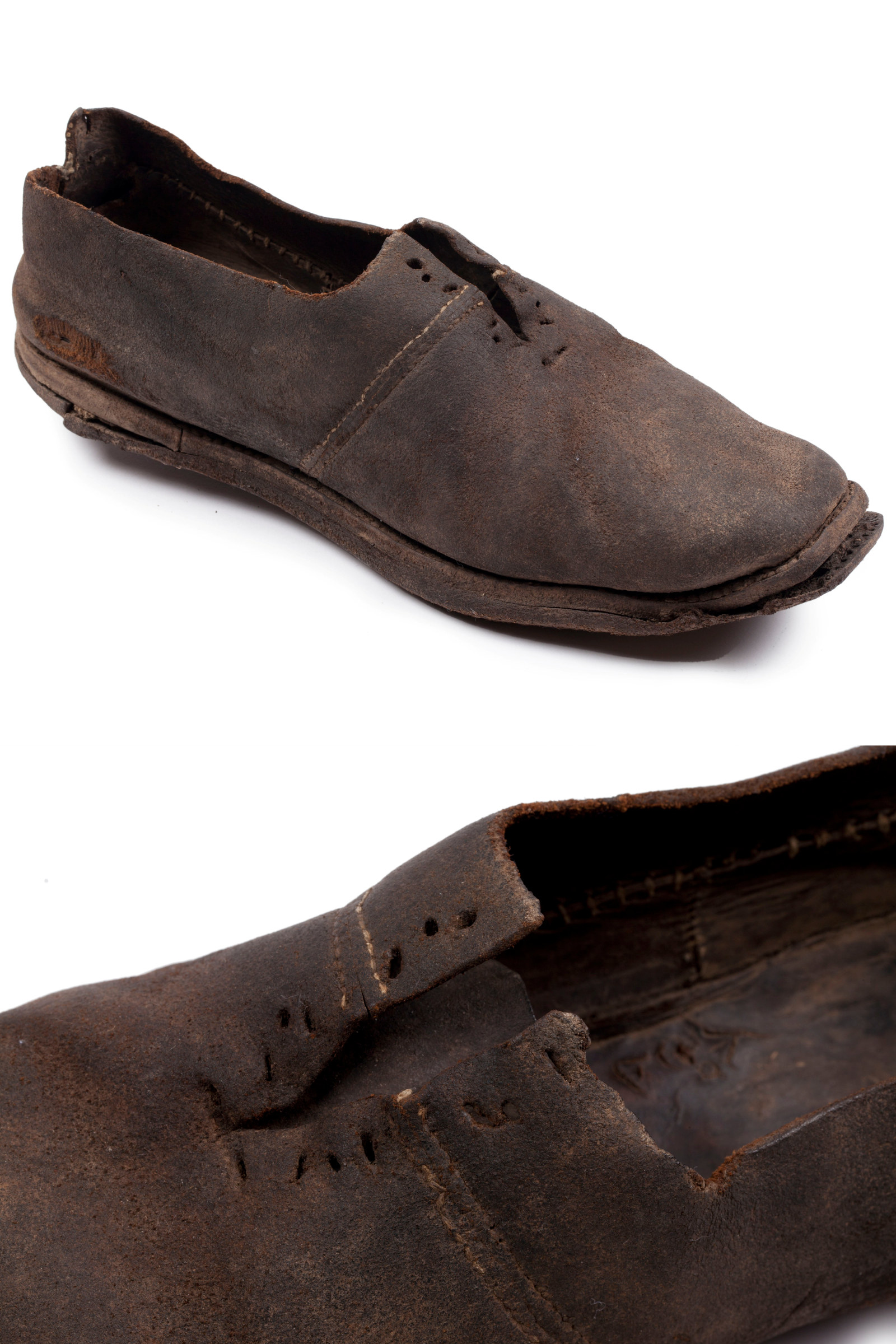
Convict Sydney
Convict shoe
Shoes were known as crab shells or hopper dockers in the convict ‘flash’ slang language; two or three pairs were issued to each convict annually